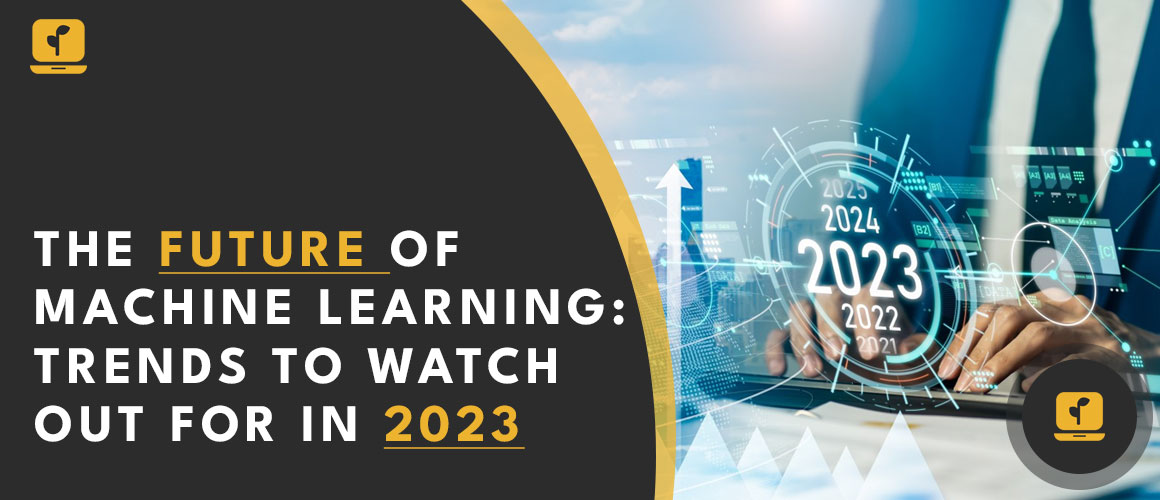The rise of machine learning is changing the fields of data analysis and software development at an ever-accelerating pace. It’s becoming increasingly difficult for professionals to keep track of all the new trends, ideas and technologies that have emerged around this topic in recent years.
Table of Contents
This article provides a brief overview of the main areas you should pay attention to in order to prepare yourself for the future of machine learning in 2023. Read on to learn more about new developments in artificial intelligence, emerging use cases, industries that are leading the way forward, and what they might mean for your career moving forward.
Artificial Intelligence (AI)
Artificial intelligence (AI) is the technology that powers machine learning. Although AI is a relatively new concept, it has been around for decades in the form of computer algorithms that process information.
The main difference between the old computer algorithms and the new AI lies in the way these algorithms process information. AI algorithms are designed to learn and experience, whereas old computer algorithms were designed to only process. AI has advanced significantly over the years, and it’s going to continue to grow significantly in the years to come. AI can be broken down into four key areas:
- AI Self-Learning – AI algorithms that improve their own performance over time
- AI Language processing – AI algorithms that can understand text and process it through different models
- AI Reasoning – AI algorithms that can make decisions based on reason and context
- AI Discovery – AI algorithms that can identify and classify data
Deep Learning
Deep learning is one of the most exciting areas in AI right now. Deep learning is a branch of AI that uses neural networks to solve complex, real-world problems. A neural network consists of multiple layers of neurons that are interconnected with each other.
Each layer uses the output of the layer below it to input the layer above it, and that process creates an output. Neural networks can be used to analyse vast amounts of data, and they’re especially effective at recognizing images and handwriting. The neural network architecture of deep learning is what makes it so effective at recognizing images and handwriting.
There are many different types of neural networks, and one of the most popular today is the deep neural network. A deep neural network is designed for image processing, text analysis, and natural language processing.
Deep neural networks are powerful because they can learn to process data by finding patterns in large amounts of unstructured data. Once the data is processed through deep neural networks, the data becomes structured and can be easily analysed.
Natural Language Processing (NLP)
Natural language processing (NLP) is the field of computer science that focuses on delving into data and extracting meaning from textual and spoken sources. NLP tools are often used to improve search functionality and to facilitate chatbots. Chatbots are special computer algorithms that are designed to handle customer service and product sales.
If you have a bot, you can automate mundane tasks and let humans focus on higher-value activities. NLP tools can help bots understand customer queries and automate customer service interactions.
One example of a NLP use case is automatic translation. The world has become a much smaller place thanks to advancements in transportation and communication technology. The advent of the internet and online services has made international travel much easier.
However, the words used in one language can have a completely different meaning in another language. This is where artificial intelligence is used to power machine learning algorithms that are trained to perform automatic translations.
Reinforcement Learning
Reinforcement learning is a branch of AI that uses rewards and punishments to develop an algorithm’s decision-making ability. To illustrate, think about how you train an animal when you want it to behave in a certain way, like when you want your pet dog to sit when you call it to come inside for dinner.
You feed your dog every time it goes inside, but you only reward it when it sits. If your dog decides to misbehave and run around instead of sitting, it will only get a stern look from you. The dog will soon learn to behave, and then it will only receive a reward when it behaves correctly. The reinforcement learning algorithms that power chatbots are an example of how reinforcement learning works with artificial intelligence.
The chatbot is programmed to respond to certain questions. However if the user begins to talk about the bot in a different context, the bot is programmed to respond differently. The bot learns from the conversations it has with the users and adjusts its responses accordingly.
Virtual Reality and Augmented Reality
Virtual reality (VR) has been around for well over a decade, but it’s only recently begun to see mainstream adoption. VR uses immersive computer graphics to create a realistic 3D environment that can be explored and interacted with by the user.
VR environments have a wide range of applications, but they’re particularly popular for gaming. VR can also be used to explore scientific data, architecture, and other real-world spaces. Although VR has been around for a while now, AR has been gaining popularity recently. AR uses computer vision to overlay digital objects onto a real-world backdrop.
AR is particularly useful for things like navigation and visualizing maps. AR can be used for things like navigation and visualizing maps, but it can also be used for things like computer vision that provide contextual information about the surrounding environment.
Bottom line
Artificial intelligence, deep learning, natural language processing, reinforcement learning, virtual reality, and augmented reality are some of the key areas that you’ll need to be aware of when working in the field of machine learning in 2023. The field of machine learning is constantly evolving, and it’s important for professionals to keep up with the latest trends and updates.













